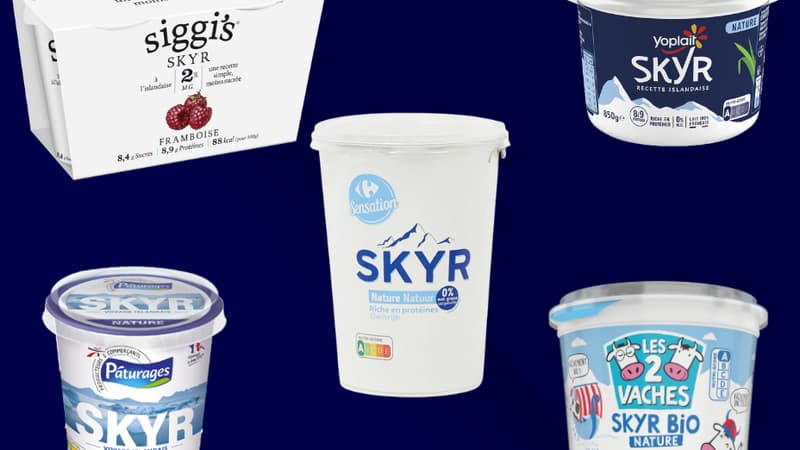It is one of the new stars of supermarkets. Skyr, an Icelandic dairy specialty, is found almost everywhere among yogurts, cottage cheese, and other fresh cheeses. Big brands (Danone, Yoplait and even Lactalis, owner of the Siggi’s brand), as well as retail brands, have invested in the niche and are increasing the number of references, eager to take advantage of consumer enthusiasm. “Rich in protein”, “low in fat”, “consumed for 1000 years in Iceland”, “simple recipe”: the packaging touts its multiple benefits.
It was not enough to convince the UFC-Que Choisir. The consumer protection association questions this skyr “which is sold at a high price”, much more expensive than other dairy products and without real benefits to justify these high prices. Some brands reach 9 euros per kilo, “between 3 and 6 times more expensive than low-fat cottage cheese”, the most similar dairy, denounces the consumer association. As for private brands, although it is generally sold at a cheaper price, it is still far superior to its low-fat cottage cheese references.
There is no real “appetite suppressant” effect
While skyr contains “an average of 30% more protein than low-fat cottage cheese,” “this specificity is probably not of interest to most of us,” notes UFC-Que Choisir. “The vast majority of French people, including vegetarians, eat more than enough protein,” says Stéphane Walrand, a human nutrition researcher at Inrae, cited by the association. And increasing it “is rarely useful, even if you practice physical activity regularly,” adds Claire Gaudichon, an expert in nutrition and eating behavior at INRAE.
As for the “appetite suppressing” effect of protein, one of skyr’s marketing arguments is that it would only be observed above 20 grams per serving. However, skyr has “only 2 or 3 grams more than medium low-fat white cheese”, a difference “insufficient to have an effect on satiety”, confirms Anestis Dougkas, specialist in dairy proteins at the Lyfe Institute, always cited by UFC-Que Choisir. Additionally, the texture of a product thickens as the protein level increases and a thick product is consumed in smaller quantities.
Source: BFM TV


